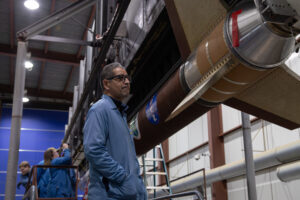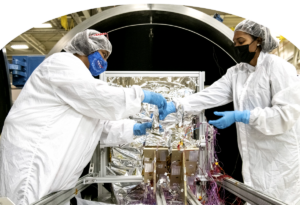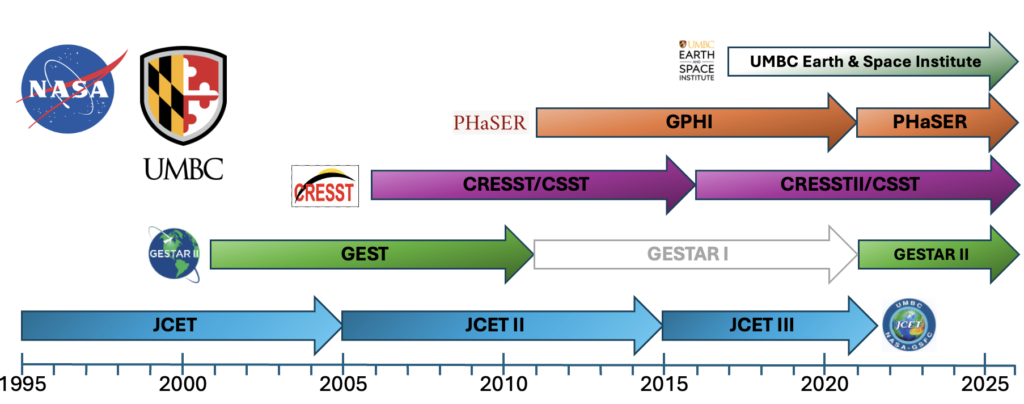NASA Goddard Space Flight Center and UMBC have a history of well over a quarter Century of close and impactful collaboration. A large fraction of UMBC’s total annual research activity – and about half of UMBC’s total federal awards – are based on Cooperative Agreements with NASA Goddard, as evidenced by the fact that UMBC is consistently ranked among the top 20 universities in terms of funded NASA activities.
Currently, over 250 scientists and research faculty members are partnering with NASA civil servants and are employed under three major Cooperative Agreements, and about 30 UMBC scientists and research faculty are actively working on active NASA Space Missions.
These Cooperative Agreements cover the majority of activities in UMBC’s NASA-oriented research centers:
UMBC’s NASA-aligned research centers include:
-

Dr. Mehdi Benna, a CSST Senior Research Scientist, with the Dissipation sounding rocket used in his research. Photo Credit: by Danielle Johnson/NASA Wallops Flight Facility. The Center for Space Sciences and Technology (CSST) consists of about 70 faculty members who are supported in large part by the CRESST II Cooperative Agreement. CSST works closely with Goddard Space Flight Center (GSFC) Astrophysics Science Division (Code 660) and Solar System Exploration Division (Code 690), as well as the other CRESST partners: the University of Maryland, College Park (UMD); Howard University; Catholic University; and the Southeastern Universities Research Association (SURA).
- The Goddard Earth Sciences Technology and Research (GESTAR II) consists of about 150 faculty members (105 are UMBC faculty) who are supported in large part by the GESTAR II Cooperative Agreement. UMBC is the lead institution for GESTAR II, which works closely with Goddard Space Flight Center (GSFC) Earth Science Division (Code 610). The consortium’s other partners are Morgan State University, Penn State University, Colorado State University, Arizona State University, ERT Corp, and the Southeastern Universities Research Association (SURA).
- The Goddard Planetary Heliophysics Institute (GPHI) consists of 20 faculty members who are supported in large part by the PHaSER Cooperative Agreement. GPHI works closely with Goddard Space Flight Center (GSFC) Heliophysics Science Division (Code 670), as well as, the other partners Catholic University of America, Howard University, George Mason University, University of Maryland, College Park, and the Universities Space Research Association (USRA).
-

Calibration testing of UMBC’s HARP2 instrument at Goddard Space Flight Center, before it was launched as part of the NASA PACE satellite in February 2024. Photo Credit: Katherine Mellos/NASA. The Earth and Space Institute (ESI) works closely with the Centers listed above to advance instrument development, calibration exercises, data analysis, algorithm development, outreach, and student training.
- The Office of Earth & Space Research Administration (ESRA) supports all of the units above, providing dedicated administrative pre-award and post-award support tailored to this community of researchers.
